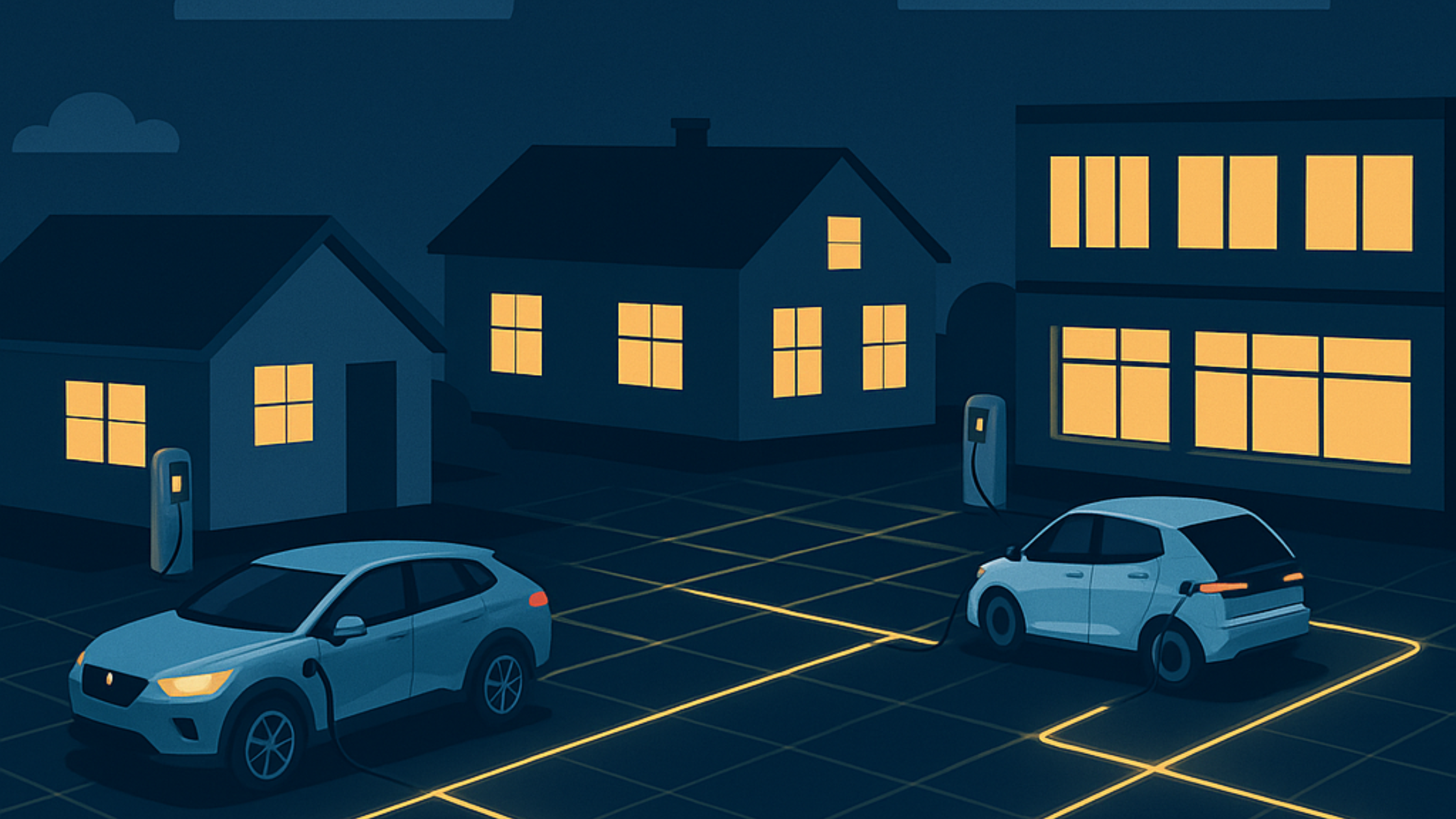Vehicle-to-Grid Power: The Untapped Opportunity Sitting in Driveways
For years, electric vehicles have been viewed primarily as a transportation solution, a cleaner, quieter alternative to internal combustion. But the truth is, EVs hold the potential to solve a much bigger challenge: grid stability.
Vehicle-to-grid (V2G) technology allows EVs to send stored energy back to the power grid, effectively transforming parked cars into miniature power plants. It’s one of the most exciting, and underdeveloped frontiers in clean energy.
The Power of What Already Exists
Across the U.S., millions of EVs sit idle 90% of the time, each one equipped with a battery capsule of holding 50-100 kWh of energy. Collectively, that’s an enormous, underutilized resource that could strengthen the grid, support renewable integration, and even generate income for vehicle owners.
The problem is the coordination, not the tech.
Utilities, automakers, and regulators have been exploring V2G for years through piloted programs, but most remain small-scale and fragmented. The innovation is proven, it’s the alignment that’s missing.
From Pilot Projects to Scalable Infrastructure
Recent pilot programs, like the collaboration between Baltimore Gas & Electric, Ford, and Sunrun, demonstrate what’s possible. In that project, owners of Ford F-150 Lightnings could discharge power from their vehicles during peak hours and get paid for it.
At scale, this model could reshape energy economics, helping utilities offset peak demand, reducing the need for costly grid expansion, and giving consumers a direct financial return for owning an EV.
But to move beyond pilot programs, the market needs three things:
Standardization - Common charging and communication protocols between vehicles and the grid. Standards like ISO 15118 (for secure bi-directional communication) and IEC 61851 (for charger inoperability) are central to achieving this.
Policy Support - Incentives that reward bi-directional energy contribution.
Infrastructure Integration - Smarter charging networks that can manage power flow securely and efficiently.
A New Asset Class for the Clean Energy Transition
For investors, this is where the real opportunity lies. V2G technology doesn’t require a new invention, it requires scaling what’s already proven.
The ability to monetize energy stored in EVs transforms charging from a cost center into a value stream. It creates new revenue models for infrastructure operators and positions EV networks as flexible, distributed energy assets.
As the Inside Climate News article noted, “Your EV battery is an underutilized resource that could act like a power plant for your region”. The economics are already compelling, and the race to capture that value is underway.
The Future is Bi-directional
We often say the future of mobility is electric. But the future of energy is interactive. A grid that communicates with vehicles, homes, and businesses to balance supply, demand, and cost.
V2G isn’t just an upgrade to how we drive, but an evolution in how we power everything else.

